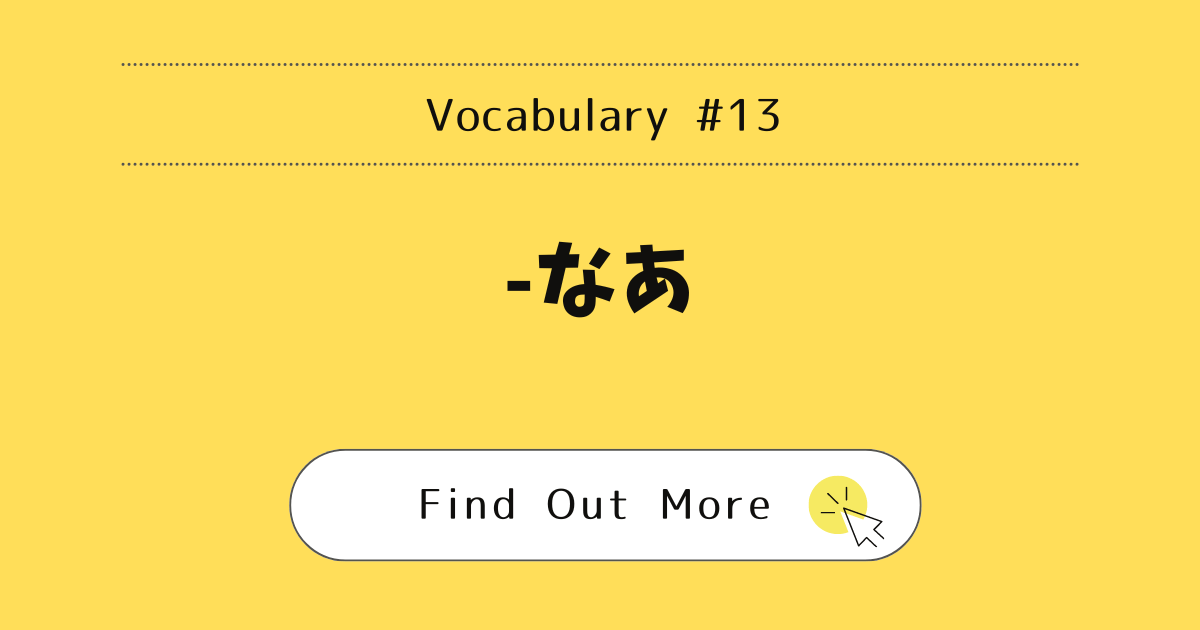
Introduction
In Japanese, the particle なあ (naa) is often used at the end of a sentence to express strong emotions, such as admiration, frustration, or surprise. It usually follows a short form predicate and is often used when you are speaking to yourself. Understanding how to use なあ (naa) can add more emotion and naturalness to your Japanese speech.
Examples
Here are some examples that illustrate how to use なあ (naa) to express different emotions:
1. Expressing Admiration
When you feel admiration or are impressed by something, you can use なあ (naa) at the end of your sentence.
- 先生はやさしいなあ。 (Sensei wa yasashii naa.) – Wow, isn’t my professor nice!
- Explanation: In this sentence, なあ (naa) expresses admiration for the professor’s kindness.
- いい本だなあ。 (Ii hon da naa.) – Whoa, this is a great book.
- Explanation: Here, なあ (naa) shows that the speaker is impressed by the quality of the book.
2. Expressing Frustration or Surprise
なあ (naa) can also be used to express frustration, surprise, or other strong emotions when something unexpected happens.
- おなかがすいたなあ。 (Onaka ga suita naa.) – Gee, am I hungry!
- Explanation: In this case, なあ (naa) is used to emphasize the speaker’s surprise at how hungry they are.
- あの人はけちだな。 (Ano hito wa kechi da na.) – Darn, isn’t that guy cheap!
- Explanation: Here, な (na) expresses the speaker’s frustration with someone being stingy.
Conclusion
The particle なあ (naa) is a simple way to express strong emotions in Japanese, whether you are admiring something, feeling frustrated, or surprised. It adds a natural touch to your speech, especially when talking to yourself.



